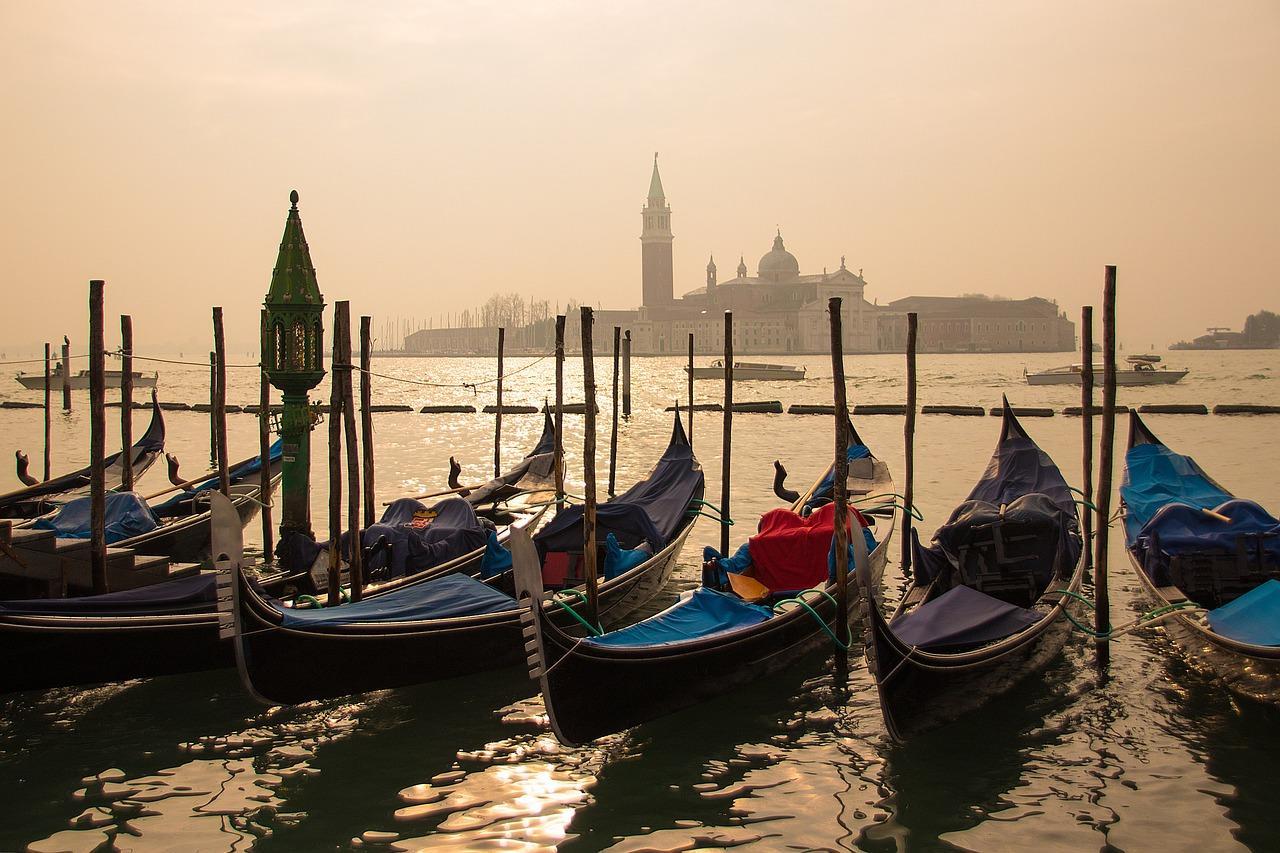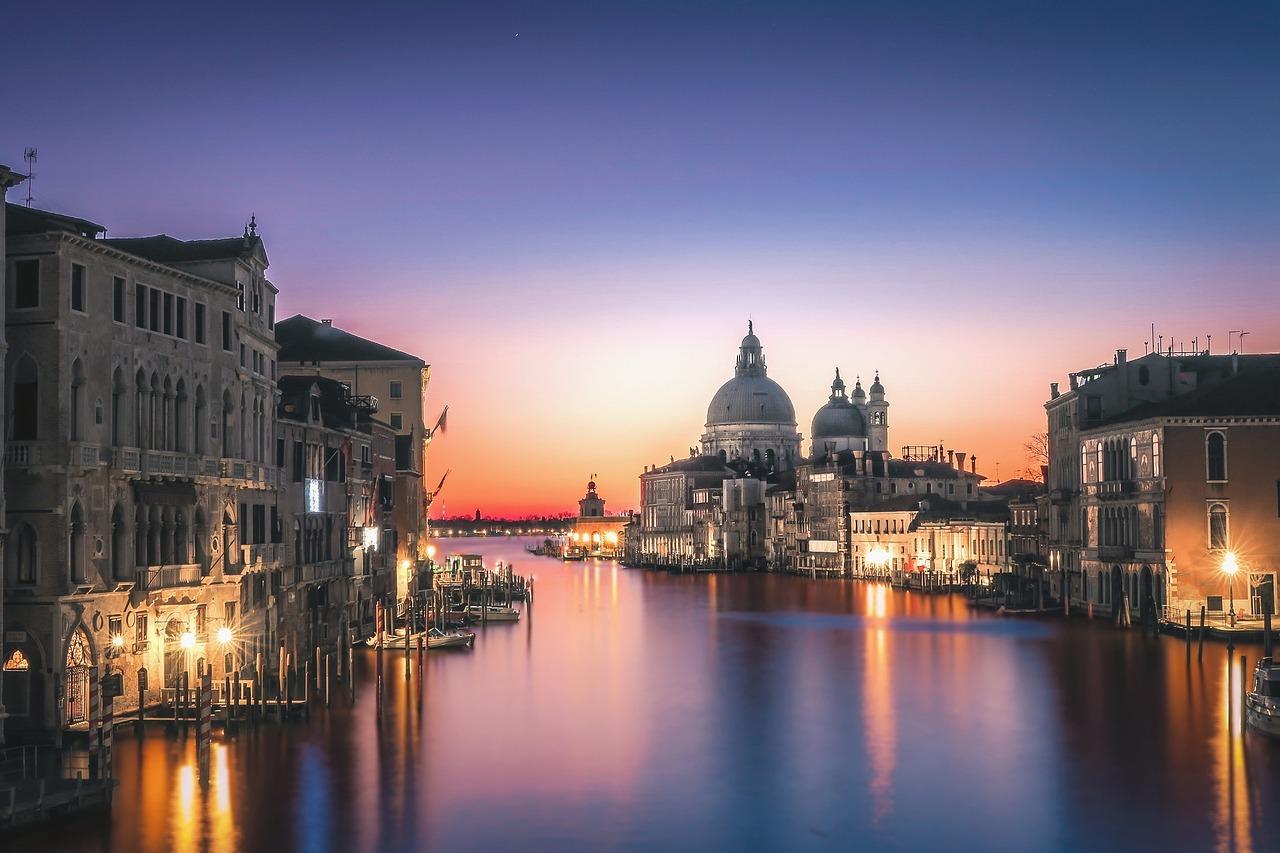Venice: Navigating the Canals – A Transport Guide
Venice, a beautiful city built on a series of islands, is known for its unique transportation system that features water buses, gondolas, and pedestrian-friendly walkways. In this guide, we will cover the various ways of arriving in Venice and getting around the city. We’ll discuss arriving by plane, train, car, and boat, as well as the options for exploring Venice once you’ve arrived.
Table of Contents
Getting to Venice
Arriving by Plane
Venice is served by two main airports: Venice Marco Polo Airport (VCE), which is the primary international airport, and Treviso Airport (TSF), which caters to low-cost airlines. To reach Venice from the Marco Polo Airport, you can take the Alilaguna water bus or a land bus to Piazzale Roma, or hire a private water taxi. From Treviso Airport, you can take a bus or train to reach Venice.
Check the Venezia Unica website to book the Alilaguna water bus and the ATVO transfer.
Venezia Unica website: https://www.veneziaunica.it/en/e-commerce/services
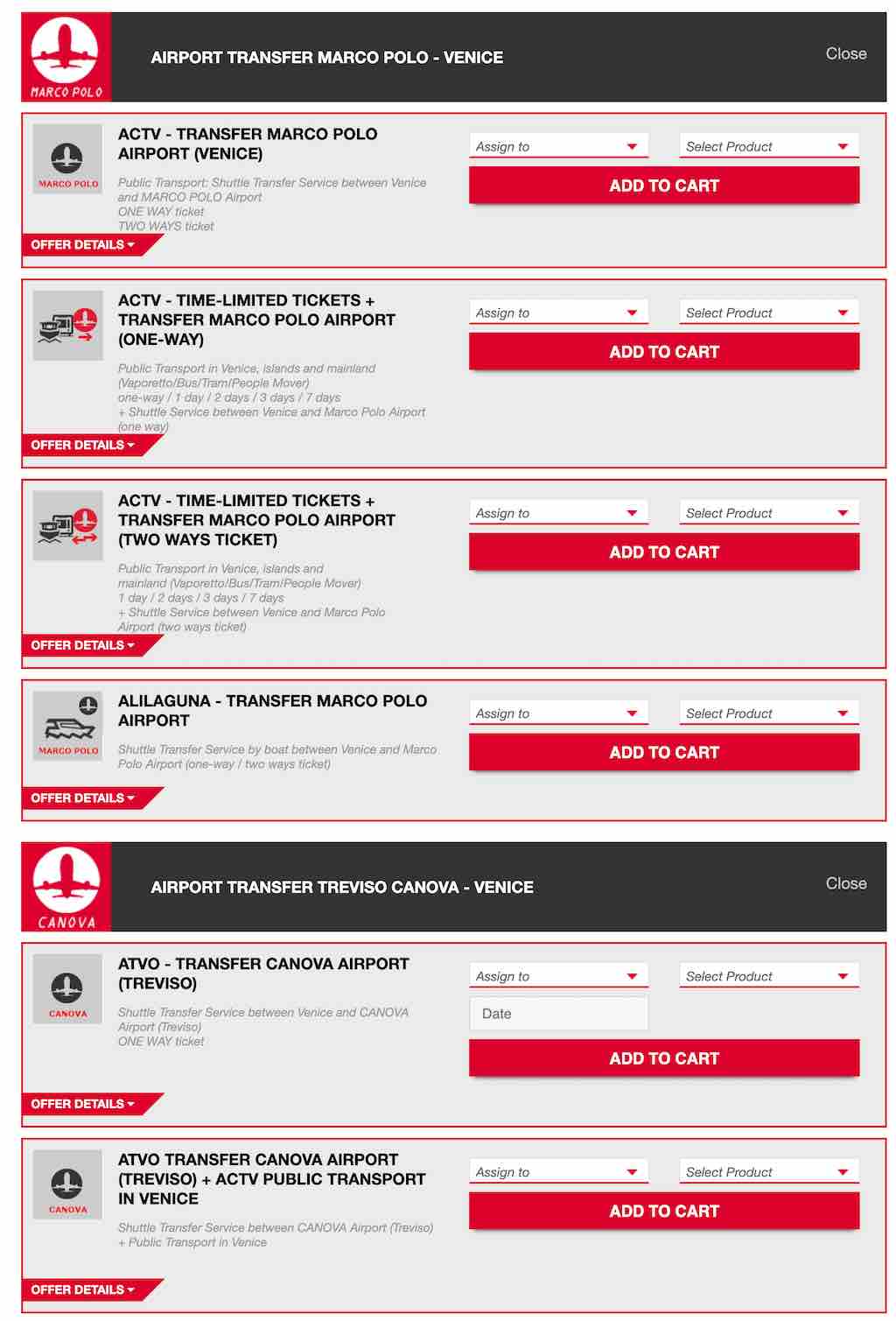
Arriving by Train
Santa Lucia is Venice’s main train station, conveniently located near the city center. It is well-connected to other Italian cities like Rome, Florence, and Milan, as well as European destinations. Once you arrive at Santa Lucia, you can access the city’s vaporetto system or hire a water taxi to reach your accommodations.
Arriving by Car
Cars are not allowed in Venice, so if you’re driving, you’ll need to park your vehicle at one of the parking facilities near Piazzale Roma or on the island of Tronchetto. From there, you can take a vaporetto or water taxi to your destination within the city.
Check the Parking service to park at the Piazzale Roma: https://www.veneziaunica.it/en/e-commerce/services.
Arriving by Boat
Cruise ships typically dock at the Marittima Cruise Terminal, from where passengers can take a free shuttle to Piazzale Roma or the People Mover tram to access the vaporetto system or hire a water taxi.
Getting Around Venice
Vaporetto (Water Bus) System
Venice’s public transportation system, the vaporetto, is a fleet of water buses that navigate the city’s canals. Tickets can be purchased at ticket booths, online, or through the Venezia Unica app. Single-journey tickets are available, but for extended stays, consider purchasing a multi-day travel card for convenience and savings.
Recommend to buy the Water-Bus N-Day Pass on Venezia Unica website. See more in the Venice City Pass.
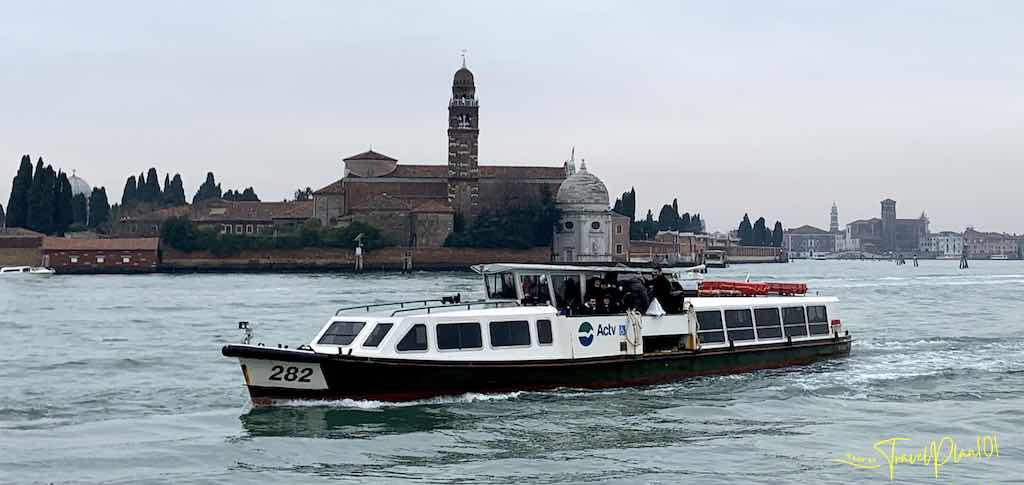
There are numerous vaporetto lines, each with its own designated route and stops. Some of the most popular lines include Line 1 and Line 2, which travel along the Grand Canal, providing picturesque views of Venice’s iconic architecture. Other lines, such as Line 4.1 and Line 4.2, connect the city center to the outer islands like Murano, Burano, and Lido.
Single vaporetto tickets can be purchased at ticket booths near major stops, on board the boats, or through the Venezia Unica City Pass. A one-way ticket costs €7.50 and is valid for 75 minutes. For those planning to use the vaporetto frequently, purchasing a Travel Card or a Venezia Unica City Pass is a more cost-effective option. These passes offer unlimited travel on vaporettos and other public transportation for a specified duration (24, 48, 72 hours, or 7 days). Please check the Water-Bus Day Pass.
Vaporettos generally operate from early morning until midnight, with some lines running 24 hours a day. During the day, boats arrive at stops approximately every 10-20 minutes, while nighttime service is less frequent. To ensure a smooth journey, check the timetable and route map available at vaporetto stops or online.
Water-bus routes and station Map: PDF
Below are the ACTV official website for different waterborne Routes and Timetable:
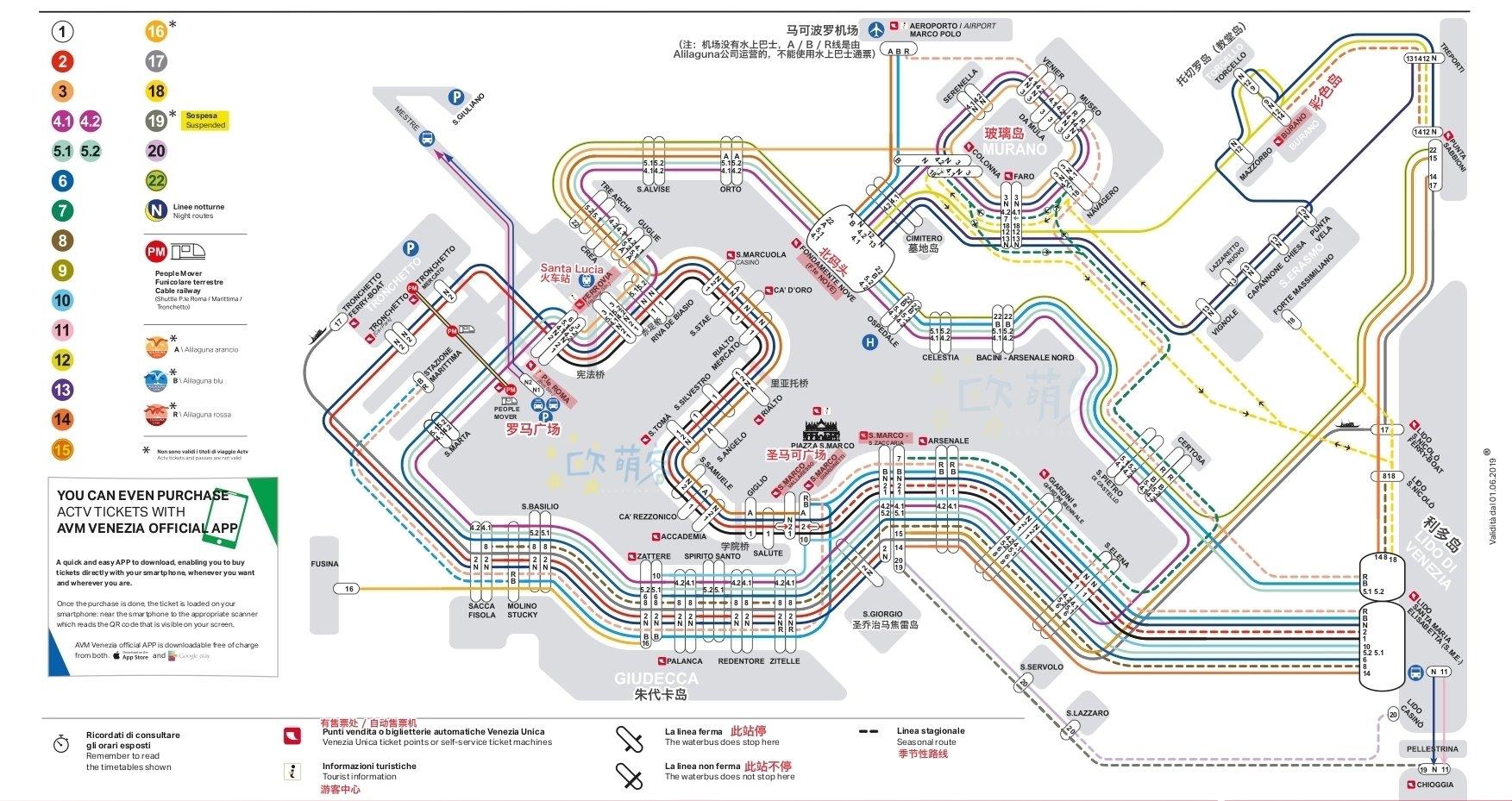
Tips for Riding the Vaporetto
- Validate your ticket before boarding by scanning it at the electronic reader near the boarding platform.
- Keep your ticket handy, as ticket inspectors may ask to see it during your journey.
- Be aware that vaporettos can become crowded during peak hours and tourist seasons, so be prepared to stand and hold onto handrails for stability.
- When disembarking, allow passengers to exit the boat before boarding, and be mindful of your belongings, as pickpocketing can occur in crowded areas.
Most vaporettos are wheelchair-accessible, with ramps and designated spaces for wheelchair users. It’s advised to check the accessibility information for specific lines and boats beforehand to ensure a smooth and comfortable journey.
Water Taxis
For a more direct and private mode of transportation, water taxis can be hired to take you to your destination. While they are more expensive than the vaporetto, water taxis offer a faster and more comfortable journey, especially when carrying luggage.
You can find water taxi stations near major tourist spots, hotels, and transportation hubs, such as Piazzale Roma, Santa Lucia Train Station, and Marco Polo Airport. Many hotels also have their private water taxi docks, which can be used by guests for pickups and drop-offs.
To book a water taxi, you can either approach a water taxi stand or make a reservation through a hotel concierge, online platforms, or phone applications. Advance booking is recommended, especially during peak tourist seasons and for airport transfers, to ensure availability and timely service.
Online booking: https://www.motoscafivenezia.com/en/
Water taxi fares in Venice are typically higher than vaporetto tickets, as they offer a more personalized and swift service. Prices vary based on the distance, time of day, number of passengers, and luggage. A ride within central Venice can cost between €40 and €70, while transfers to and from Marco Polo Airport can range from €100 to €150. Be sure to confirm the price with the water taxi operator before boarding to avoid any misunderstandings.
Water taxis provide several advantages over other modes of transportation in Venice. They offer a more flexible schedule and can accommodate larger groups and luggage, making them a popular choice for families, business travelers, and those with limited time. Additionally, water taxis can access narrower canals and reach destinations that may not be serviced by the public vaporetto system.
When using water taxis in Venice, consider sharing the ride with other passengers to split the cost and make it a more affordable option. Always ensure that you and the driver have a clear understanding of the fare and destination before starting the journey. And finally, enjoy the unique experience of cruising through Venice’s canals in style and comfort aboard a private water taxi.
Gondola Rides
A quintessential Venetian experience, gondola rides offer an unforgettable and romantic way to explore the city’s enchanting canals. These traditional, flat-bottomed rowing boats have been used for centuries in Venice and are steered by skilled gondoliers who navigate the narrow waterways with grace and expertise.
There are two main types of gondola rides: shared and private. Shared rides, typically referred to as gondola tours, allow you to join a group of up to six passengers, making it a more budget-friendly option. Private rides, on the other hand, give you and your companions exclusive access to the gondola for a more intimate and personalized experience.
Generally, a 30-minute private ride during the day can range from €80 to €100, while prices for shared rides vary based on the tour operator. Each gondola can carry 6 people. The gondola ride is priced per ride, so you can split the price of a single gondola ride to €14 to €17. Evening rides tend to be more expensive, as they provide a unique ambiance under the starlit sky.
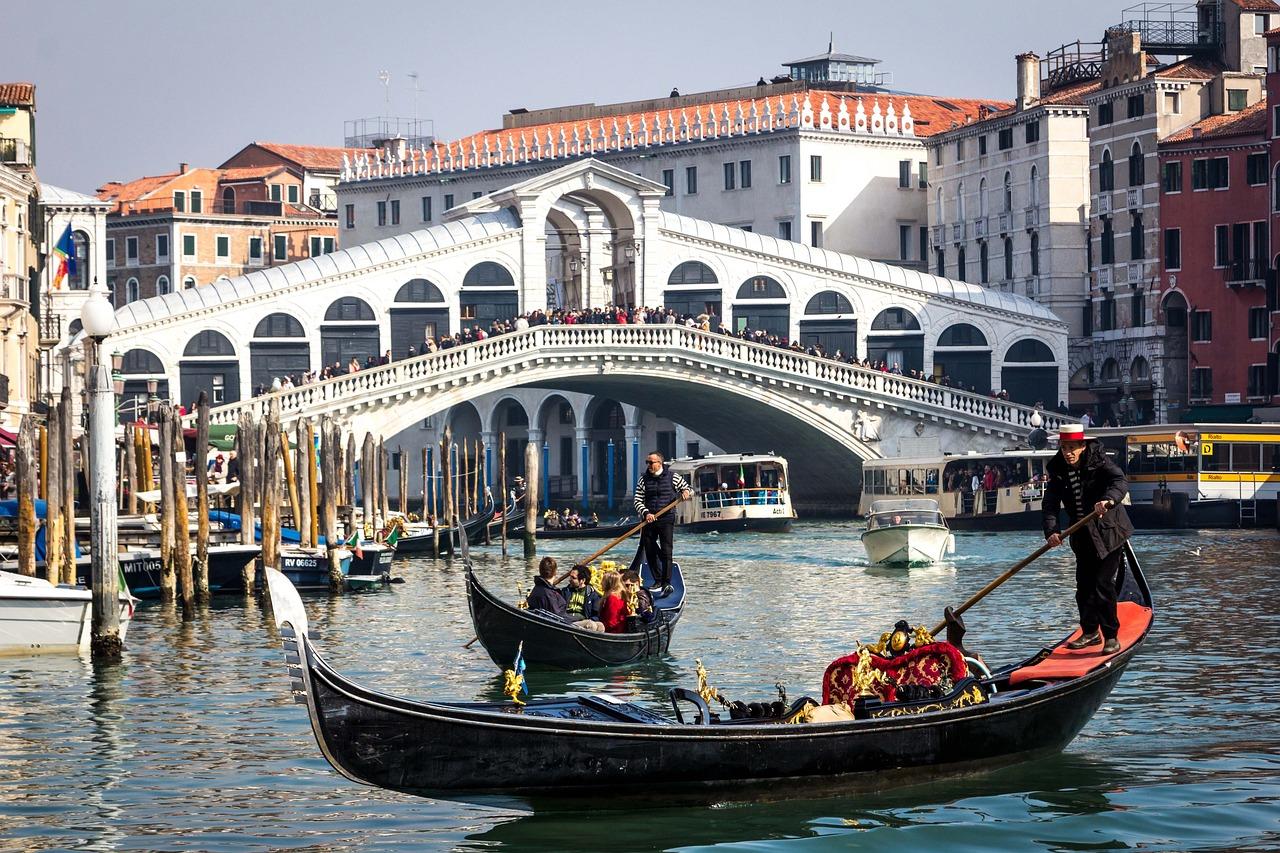
During a gondola ride, you’ll glide through Venice’s charming canals, passing by historic palazzos, ornate bridges, and picturesque piazzas. Some gondoliers may share stories about the city’s history and landmarks, while others may serenade you with traditional Venetian songs. Keep in mind that gondola rides usually do not include a guided tour or in-depth commentary unless specified in the booking.
To make your gondola ride truly memorable, consider booking it during less crowded times, such as early morning or late evening. Don’t forget to bring a camera to capture the beautiful scenery and unique perspective of Venice from the water. Lastly, communicate any special requests or preferences to your gondolier to ensure a tailor-made experience that meets your expectations.

